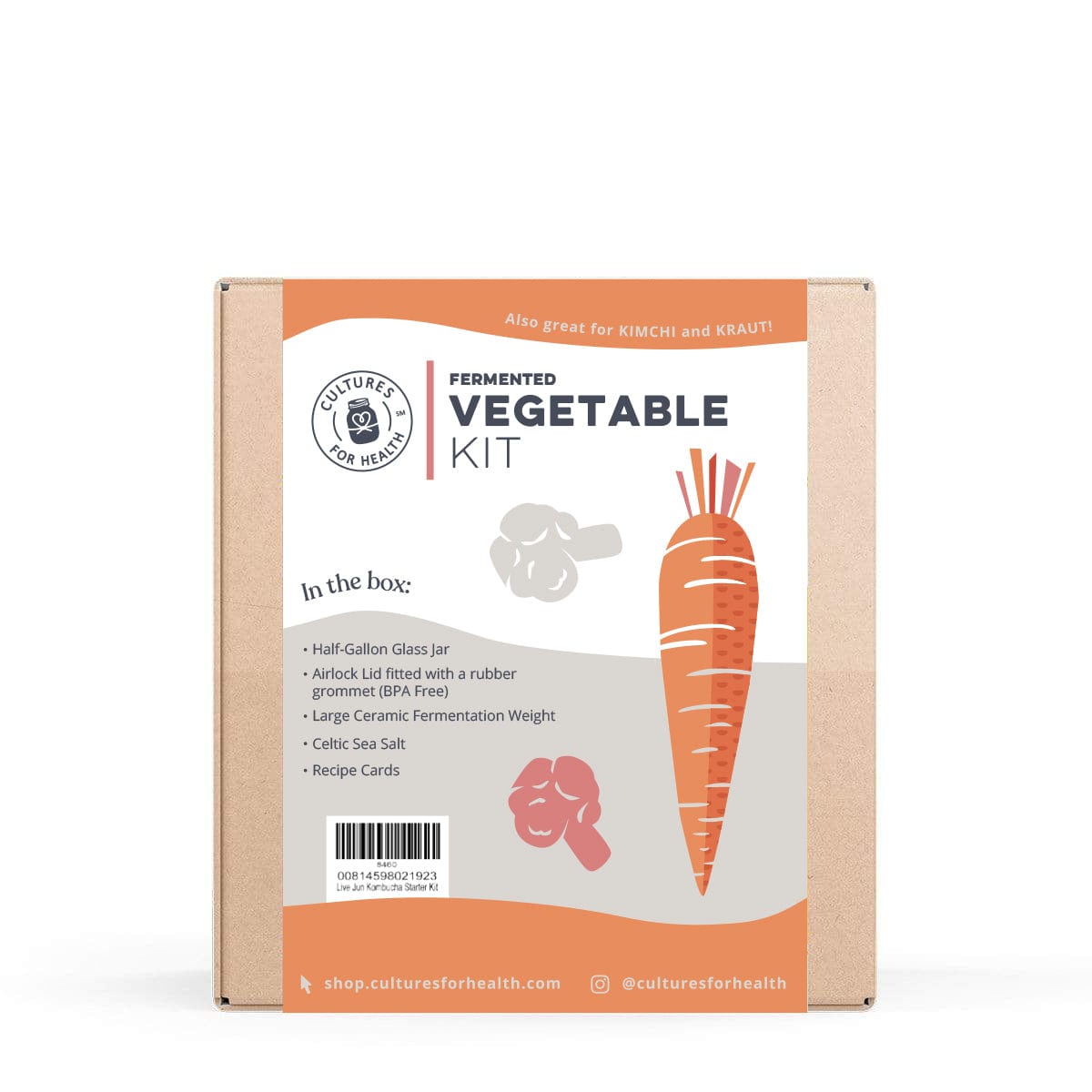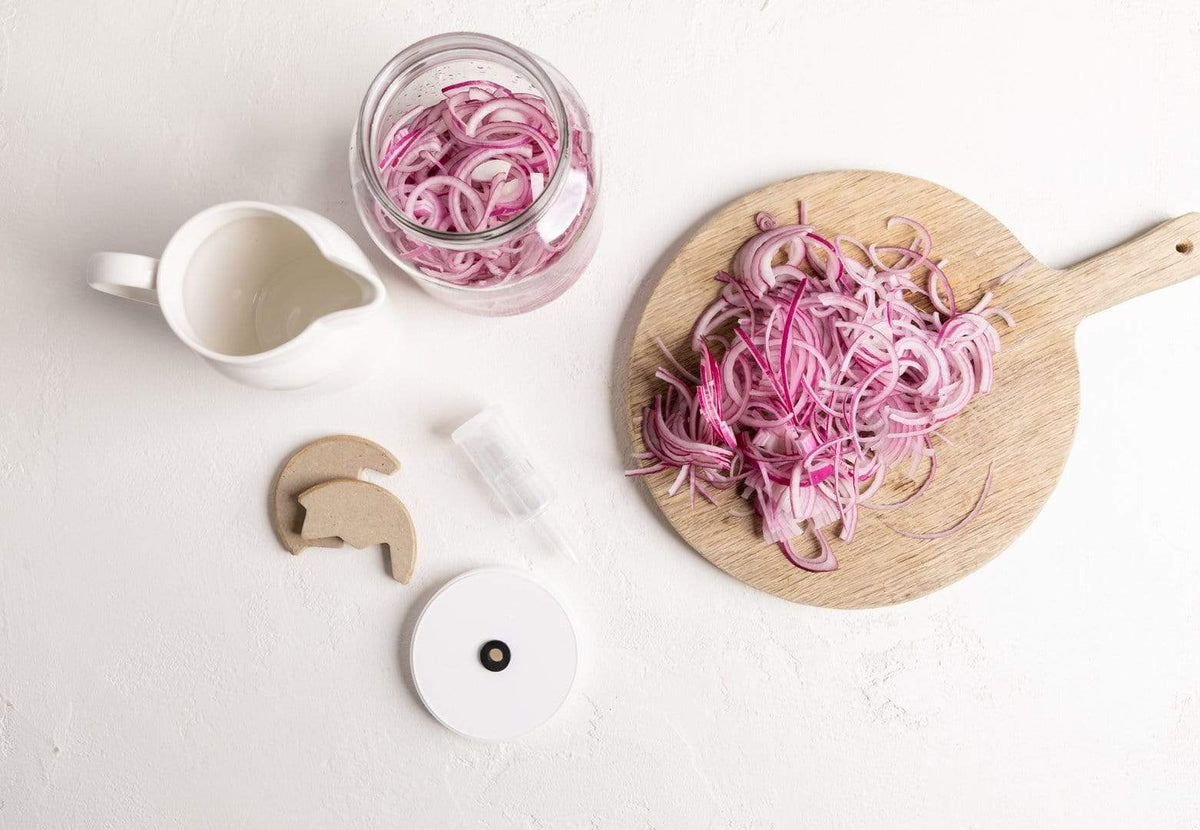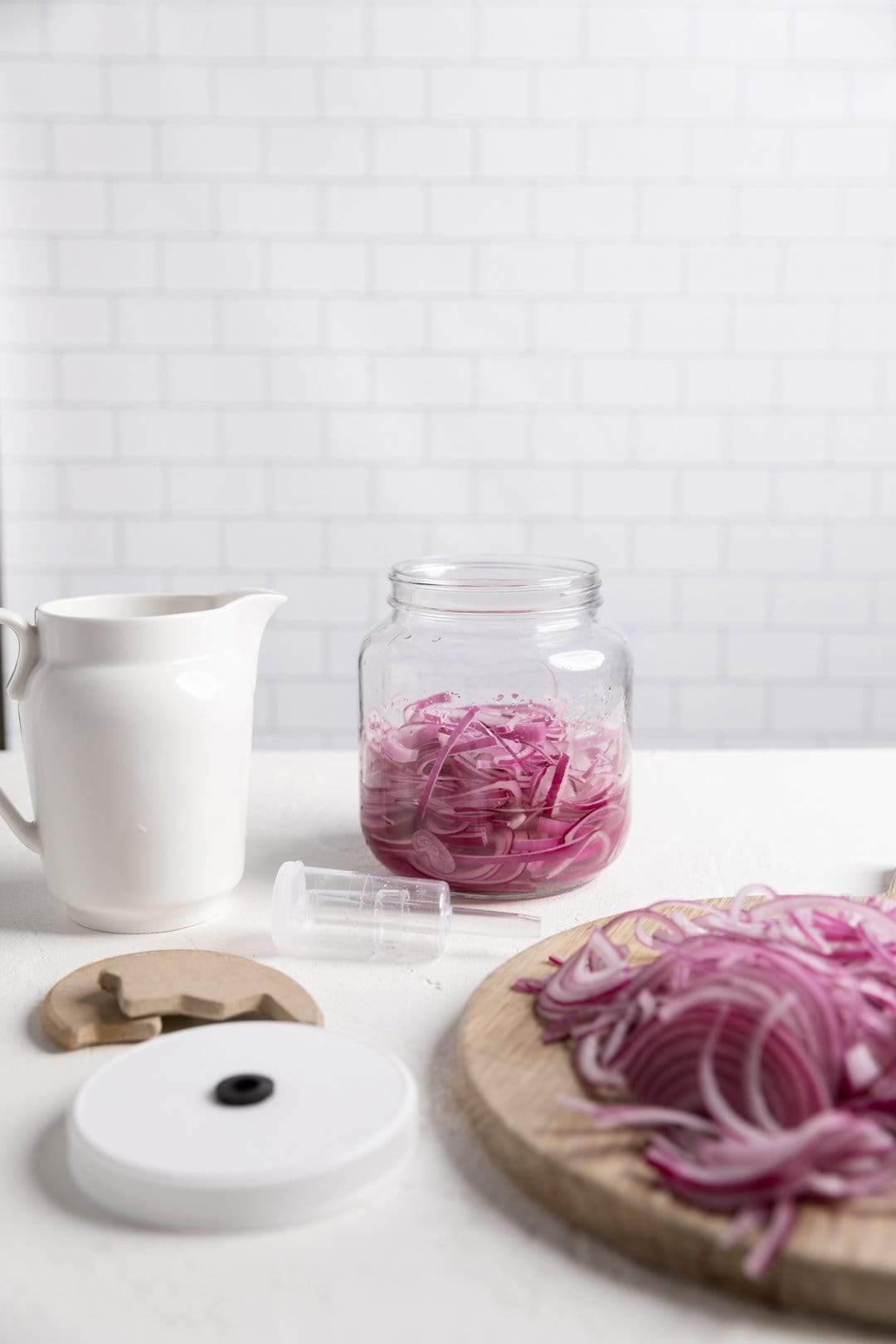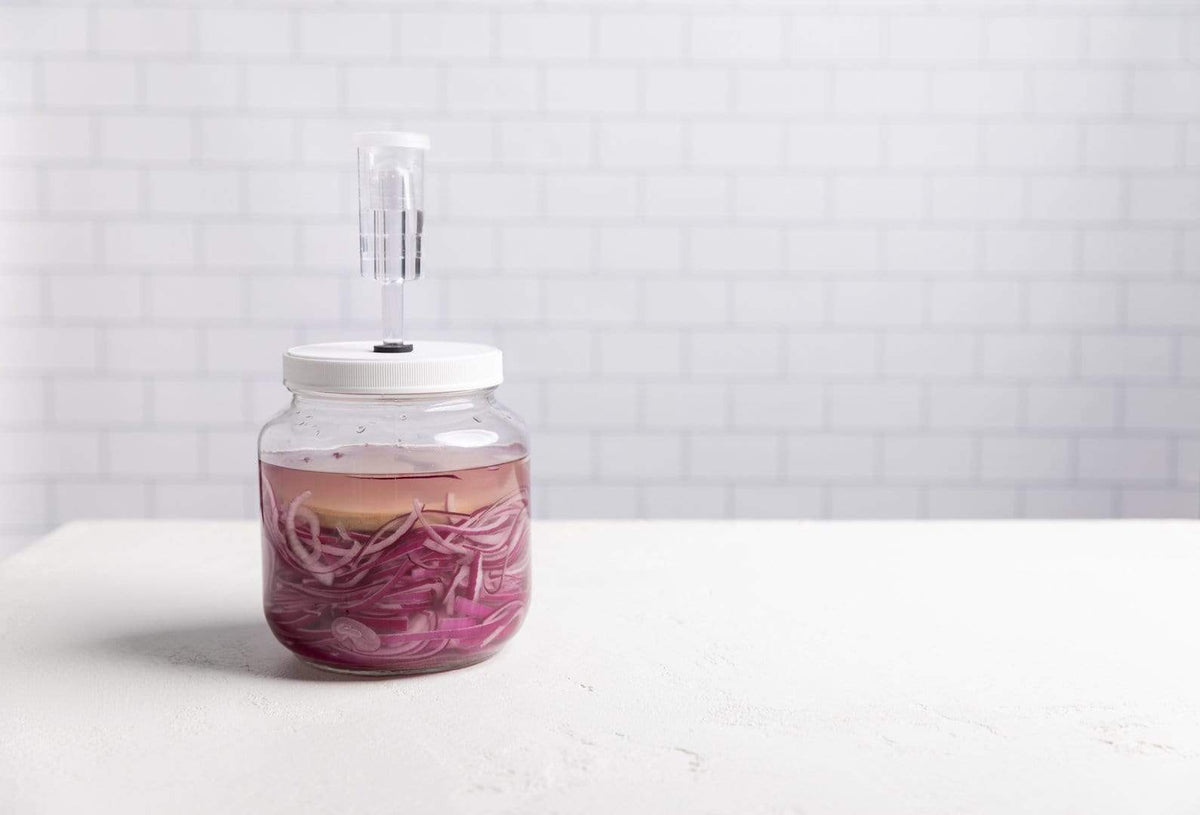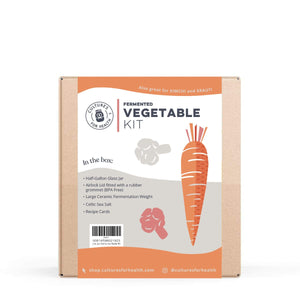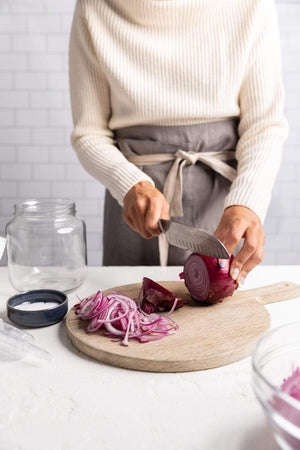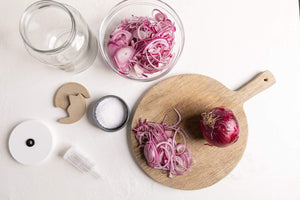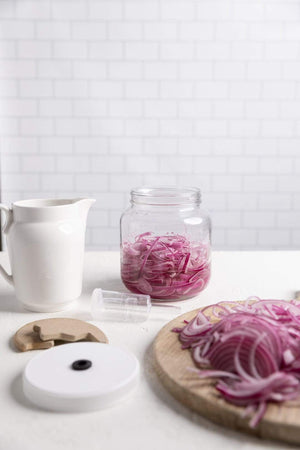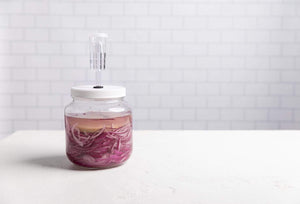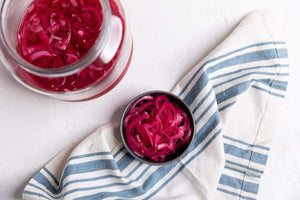
Have you ever tried kimchi? If not, you're missing out on a classic Korean dish full of probiotic goodness!
Kimchi is a traditional Korean dish that was initially made during the winter months to preserve the vegetables from the harvest. The different varieties of kimchi include cabbage (the most popular—baechu kimchi), radishes, cucumber, green onions... The list goes on! The taste of kimchi varies depending on the ingredients, methods, and fermentation time. It is often used as a side dish or served with rice and meat dishes.
This blog is going to help you learn all about what kimchi is, how to make it, what it tastes like, and more.
KIMCHI EXPLAINED: AN INTRODUCTION TO THE POPULAR KOREAN DISH

Kimchi is a traditional Korean dish made from fermented vegetables and seasonings. It's one of the most popular dishes in South Korea, and it's an important part of the Korean diet.
WHAT IS KIMCHI REALLY?
Kimchi has become popular around the world. It's made by fermenting cabbage, radishes, and other vegetables in a mixture of salt, garlic, ginger, and chili pepper. The taste of the resulting mixture can vary depending on the specific ingredients used and how long it is fermented, but it is generally spicy, sour, and slightly tangy.
There are over 180 varieties of kimchi! Some are milder than others; some contain only cabbage, while others have different vegetables. Kimchi can be served at every meal: breakfast (with rice), lunch (as a side dish), dinner (with meat or fish), or snack time (on crackers). It can also be used as an ingredient in other foods, such as soups and stews.

A CLOSER LOOK AT THE HISTORY AND CHARACTERISTICS OF KIMCHI
The word "kimchi" comes from the Korean word for soaked vegetables: “gimchi”.
Like many great dishes, kimchi has a history that goes back even further than you might suspect. The earliest evidence of kimchi was found in the Silla dynasty, which dates all the way back to 935 C.E. Kimchi became an important part of Korean culture during the Vietnam war, thanks to its use as a cheap food source for the troops.

One origin story says that Kimchi originally started out as traditional salt-pickled vegetables, preserved in jars and buried underground during the cold winter months. Then, with warmer temperatures, these vegetables began to ferment and develop new flavors—more pungent, sour, spicy ones that made them taste irresistible. The vegetables were dug up and enjoyed during the summer months, as they were refreshingly cool and used to battle the heat.
It's incredibly versatile (kimchi fried rice, anyone?) and because it's pickled and fermented, it can be stored for months without spoiling.
Among the many kimchi benefits, the dish is recognized for its nutritional value as it is packed with probiotics, vitamins A and C, fiber, and numerous antioxidants.
Kimchi boasts many health benefits, such as:
- Boosting your immune system.
- Helping you digest food better, which means less bloating and gas.
- Being rich in fiber, which can help reduce your risk of heart disease and diabetes.
- Helping to lower cholesterol levels in your body by reducing the absorption of cholesterol from food consumed during meals.
- Containing plenty of probiotics, which help keep your gut healthy by promoting the growth of good bacteria in your intestines.
- Providing anti-inflammatory properties.
- Helping with weight loss.
- Improving your skin.
-
Being rich in vitamins (ascorbic acid, carotene, and B-complex) and minerals like iron, potassium, and calcium.
THE FLAVOR PROFILE: WHAT DOES KIMCHI TASTE LIKE?
Now the question is, what does kimchi taste like? The ingredients used in the kimchi determine its texture and taste. Each ingredient contributes something to the flavor of kimchi.

- Red pepper powder gives kimchi a bit of spice.
- Fish sauce gives kimchi a salty, umami flavor.
- Fermented salted shrimp adds a salty and slightly fishy taste to the dish.
The taste also depends on the type of kimchi you're eating. For example, if you're eating the milder variety of kimchi (which has less red pepper), it will taste slightly sour with a mild kick of spice. If you're eating the spicy version, expect it to be much more pungent, and maybe even spicy enough to make your eyes water!
A DEEPER LOOK: WHAT IS KIMCHI MADE OF?
The exact ingredients and method used vary from place to place, but they tend to include napa cabbage, radish, ginger, garlic, onion, chili peppers, and fish sauce. The mixture is packed into jars or bowls to ferment over time. The flavors develop and change as it ages; some people prefer their kimchi when it's young and fresh-tasting, while others like it best when it's sour and spicy.
Kimchi can be made at home or purchased at grocery stores or markets. It's usually sold in jars or plastic bags with a brine that contains water, salt, and spices like red pepper powder for heat.
Note: Be aware that, while kimchi may seem like a gluten-free food, many store-bought kimchis are made with various wheat ingredients, often in soy sauce. If you’re gluten intolerant, we recommend making gluten-free kimchi at home, because it is simple to make and contains less sugar than traditional kimchi.
EASY STEPS TO MAKE KIMCHI AT HOME

Making kimchi at home is super easy and it will be gluten-free as well! We have a full kimchi recipe, but here are some steps to follow so you can make your own batch of gluten-free kimchi:
-
First, you need to gather all of your ingredients. You'll need napa cabbage, green onions, garlic, ginger, sea salt, and gochugaru pepper flakes. You’ll also need a small selection of fermentation equipment to get the most out of your kimchi making. We have a simple vegetable fermentation kit to make it easy for you.
Fermented Vegetable Kit
$35.99$40.99Make tasty fermented veggies at home with our DIY Fermented Vegetable Kit! This kit is also great for making kimchi, sauerkraut, and more! Equipment in the kit may appear different than pictured. INCLUDED IN THE KIT Half-Gallon Fermentation Jar Airlock Lid fitted with rubber grommets Ceramic Fermentation Weights Celtic Sea Salt Recipe cards USING THE...
- Combine all ingredients in a large bowl and massage the salt into the vegetables. Let the mixture sit for 5-10 minutes, allowing the salt to draw out the juices. Use a cabbage crusher or another pounding tool to crush the mixture until enough juices are released to cover it completely. Make sure to check out the recipe for precise measurements.
- Add the mixture into a clean fermenting jar, pressing it down under the liquid. If necessary, add a bit of water to ensure the mixture is fully covered. Cover the jar with an airlock lid and culture the mixture at room temperature (60-70°F is preferred) until it reaches the desired flavor and texture—usually around 3-7 days.
You can learn more about the process of fermenting vegetables in our blog article on how to ferment vegetables at home.
KIMCHI: A MUST-TRY DISH FOR EVERYONE
Warm and crunchy, spicy and pungent, tangy and garlicky—what's not to love about Korean kimchi? Aside from, of course, the amazing taste and probiotic benefits, one of the most exciting things about kimchi is that it uses different ingredients than many other fermented foods.
Although it's often associated with sauerkraut, kimchi typically has a shorter fermentation period that results in a unique flavor profile and texture. A typical batch of kimchi includes cabbages, radishes, onions, garlic, ginger, fish sauce, and Korean chili powder, a complex blend of flavors that creates a healthy food that just tastes so good.
Kimchi is also an example of how slowly-fermented foods can be a fantastic addition to your diet. It's packed with probiotics that are good for your gut health and immune system. The fermentation process allows natural enzymes to break down some of the vegetables' fiber into smaller molecules that are easier for your body to digest.
CONCLUSION: WHAT IS KIMCHI & HOW DOES KIMCHI TASTE?
This unique fermented food has been a Korean staple for over a thousand years, and now the rest of the world is enjoying it as well. It’s incredibly versatile, easy to make, and full of nutrients to help your body run better. Give it a try, and experience the unique taste and health benefits of kimchi for yourself!
Kimchi is a vibrant part of Korean cuisine, and it's exciting to see it gaining popularity worldwide. Whether you're a seasoned fermenter or a curious beginner, we hope this guide has answered your questions: "What is kimchi?", "What does kimchi taste like?", and "What is kimchi made of?". Now, all that's left is to try making it yourself and enjoy the numerous health benefits and delicious flavors it offers!














